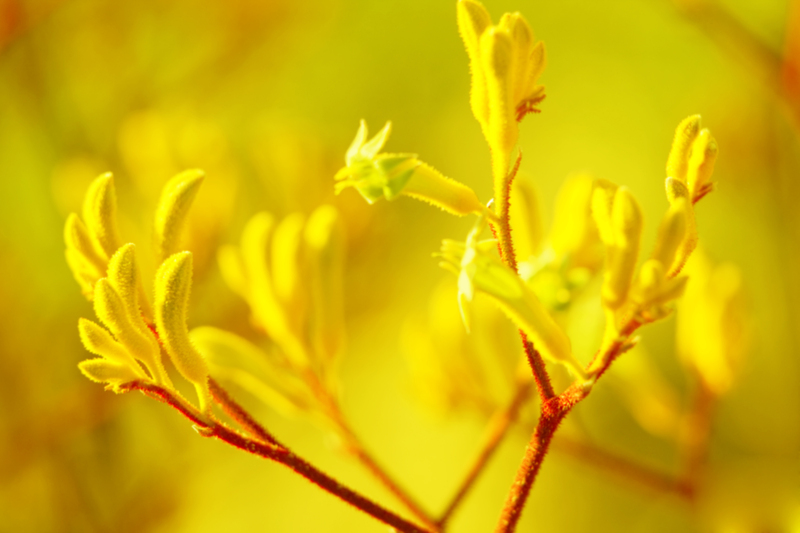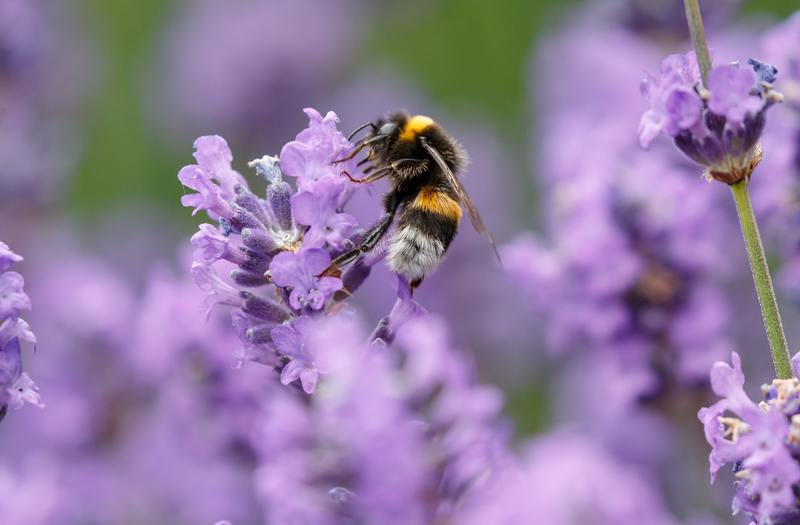Building an Adventure Garden for Little Ones
Posted on 03/06/2025
Building an Adventure Garden for Little Ones: A Comprehensive Guide
Creating an adventure garden for little ones is a magical way to spark creativity, foster exploration, and encourage healthy outdoor play. Whether you have a sprawling backyard or a compact green space, you can design a safe, inspiring, and engaging garden that will captivate children's imaginations. In this comprehensive guide, we'll explore practical steps, innovative ideas, and expert tips to help you build a unique adventure playground for your kids.
Why Build an Adventure Garden for Children?
Adventure gardens are more than just places to play--they are immersive environments where kids can learn, grow, and connect with nature. Here's why an adventure garden for kids is a wonderful investment:
- Stimulates Creativity: Encourages imaginative play away from screens.
- Physical Development: Promotes balance, coordination, and strength.
- Emotional Well-being: Nature play reduces stress and fosters happiness.
- Social Skills: Encourages teamwork, sharing, and communication.
- Environmental Awareness: Helps children appreciate and respect nature.

Step-by-Step Guide to Creating an Adventure Garden for Little Ones
1. Evaluate Your Space and Plan Ahead
Every adventure garden for small children starts with a thoughtful plan. Begin by evaluating your available outdoor space, regardless of size or shape. Consider the following:
- Safety: Eliminate harmful plants, create soft surfaces, and ensure clear visibility from your home.
- Sunshine & Shade: Assess how much sunlight and shade each area receives throughout the day.
- Water Proximity: Is there a nearby water source for play features, or should you install one?
- Accessibility: Can little ones move freely and safely around the garden?
Draw up a simple layout or sketch to visualize your children's adventure garden design. Identify key zones for different activities, such as climbing, digging, or relaxing.
2. Choosing Age-Appropriate Adventure Features
Integrating the right features ensures your adventure garden for toddlers or preschoolers matches their developmental stage. Focus on items that challenge and engage, yet provide safety and comfort.
- Natural Play Structures: Logs, stumps, or boulders for balancing and climbing.
- Mud Kitchens: Encourage sensory play and imaginative cooking games.
- Secret Paths and Tunnels: Simple winding trails, willow tunnels, or bamboo arches spark a sense of adventure.
- Mini Treehouse or Fort: A safe, elevated spot to view the garden or retreat to for storytelling.
- Sand and Water Play: Shallow sandpits or water tables inspire creative building and scientific exploration.
- Stepping Stones: Arrange flat stones for safe hopping and balancing challenges.
- Musical Corners: Outdoor xylophones and wind chimes to stimulate the senses.
TIP: Involve your children in the design or feature selection to boost their sense of ownership and excitement.
3. Safety First: Essential Considerations
Prioritize safety in every stage of your adventure playground creation. Here are critical guidelines:
- Surface Materials: Use mulch, rubber matting, or soft grass under climbing structures to cushion falls.
- Secure Anchoring: Ensure all large features and play equipment are firmly installed.
- Non-Toxic Plants: Choose child-safe, non-poisonous plants for all landscaping.
- Visibility: Avoid tall or dense bushes that could obscure supervision.
- Enclosures and Fencing: Keep your adventure garden secure and contained to prevent little wanderers from leaving the area.
4. Embracing Nature in Your Adventure Garden
For a true outdoor adventure garden, make nature the star. Include:
- Edible Gardens: Grow berries, cherry tomatoes, or herbs for little hands to harvest.
- Wildlife Habitats: Bird feeders, butterfly-friendly flowers, and insect hotels create living science lessons.
- Tree Planting: Plant a tree and watch it grow with your child--a living memory marker.
- Sensory Beds: Fragrant herbs, soft moss, or lamb's ear for tactile exploration.
Integrating natural elements not only beautifies your adventure garden but teaches stewardship and curiosity.
Creative Themes and DIY Adventure Garden Projects
Bring your backyard adventure garden to life with fun, themed zones or simple DIY projects:
Enchanted Forest
Use willow branches for arches, fairy houses hidden among the plants, and winding pebble paths. Add strings of solar fairy lights for twilight enchantment.
Pirate Cove
Craft a 'ship' from an upcycled wooden platform, create sand 'beaches', and install a treasure chest with costume hats and eye-patches.
Dinosaur Dig Site
Bury model fossils in a sandpit and provide brushes and buckets for your young paleontologists to discover prehistoric treasures.
Accessible Adventure Gardens
Inclusive design welcomes children of all abilities. Consider wide, smooth paths, sensory-rich beds, and raised beds for accessible planting and play. Choose equipment suitable for a range of mobility needs.
Best Plants for Kids' Adventure Playgrounds
Choose hardy, sensory-friendly, and non-toxic plants that thrive in your climate. Here's a list to get you started:
- Sunflowers: Bright, tall, and easy to grow.
- Sensory Grasses: Such as fountain grass for rustling sounds.
- Lavender & Mint: For sweet-smelling hands after picking.
- Strawberries: Delicious fruit rewards.
- Nasturtiums: Edible flowers and leaves with vibrant colors.
- Snapdragons: Fun to gently pinch and "make talk."
Always double-check plant toxicity for children before planting.
Maintenance and Upkeep of Your Adventure Garden
An adventure playground garden should be a living, evolving space. Follow these tips for hassle-free upkeep:
- Check equipment weekly for loose bolts or damage.
- Keep ground surfaces clean and soft (add mulch or fresh sand as needed).
- Involve kids in watering, weeding, and harvesting to teach responsibility and care for nature.
- Rotate or refresh toys and materials to keep the space exciting.
Outdoor Learning Opportunities in an Adventure Garden
Your adventure play garden is a classroom in disguise! Here's how you can foster valuable skills and learning:
- Science Experiments: Composting, observing earthworms, or studying plant growth.
- Mathematics Practice: Counting seeds, measuring garden beds, or timing obstacle course races.
- Art and Creativity: Painting rocks, crafting nature mobiles, or designing miniature fairy houses.
- Storytelling: Use hidden nooks or dens as settings for make-believe tales.
Every garden moment is a learning opportunity when guided by curiosity and imagination!

Top Tips for a Successful Children's Adventure Garden
- Keep it Age-Appropriate: As your children grow, adapt the garden's features to challenge their new skills.
- Encourage Free Play: Avoid over-structuring; let kids discover and invent their own games.
- Combine Quiet and Active Zones: Create space for both lively exploration and quiet reflection.
- Invite Nature's Visitors: Plant nectar-rich flowers to meet butterflies, or set up a log pile for observing beetles and bugs.
- Use Sustainable Materials: Repurpose wood, stone, or old garden materials for eco-friendly construction.
- Stay Involved: Regularly play alongside your little ones to encourage bonding, safety, and fun.
Conclusion: Let the Adventure (and Learning) Begin!
Building an adventure garden for little ones is one of the best gifts you can give your children. This nurturing outdoor space invites laughter, learning, exploration, and growth--all within the safety of your own backyard. Whether your garden is grand or petite, rustic or whimsical, the key is to design with your children's wonder at heart.
So, gather your tools, consult your tiny adventurers, and embark on the rewarding journey of creating your own adventure playground garden!
If you're seeking ideas on how to start, revisit this comprehensive guide, and remember--every garden, big or small, can become a world of discovery for your little ones.
Resources and Further Reading
- Children and Nature Network: www.childrenandnature.org
- RHS - Gardening with Children: schoolgardening.rhs.org.uk
- National Wildlife Federation - Backyard Habitat: www.nwf.org/Garden-for-Wildlife
Start your family adventure today by building an enchanting, safe, and engaging garden for your little explorers!

